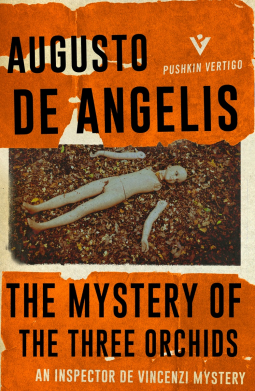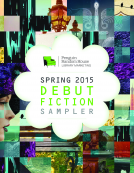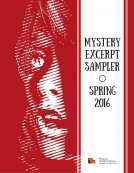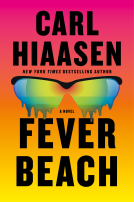
The Mystery of the Three Orchids
by Augusto De Angelis
This title was previously available on NetGalley and is now archived.
Send NetGalley books directly to your Kindle or Kindle app
1
To read on a Kindle or Kindle app, please add kindle@netgalley.com as an approved email address to receive files in your Amazon account. Click here for step-by-step instructions.
2
Also find your Kindle email address within your Amazon account, and enter it here.
Pub Date Oct 18 2016 | Archive Date Sep 09 2016
Pushkin Press | Pushkin Vertigo
Description
Death is in the air at one of Milan’s great fashion houses. As a new collection is unveiled, and the wealthy rub shoulders with the glamorous, owner Cristiana O’Brian escapes upstairs to discover the strangled body of her servant slumped on her bed—a single orchid by his side.
When Inspector Di Vincenzi is called in to investigate, the brilliant detective is puzzled. Why is Cristiana behaving so suspiciously? And what is her estranged ex-husband doing there? As two additional corpses appear, each accompanied by an orchid, Di Vincenzi must see through dirty tricks and slippery clues in order to uncover the real killer.
Advance Praise
'De Vincenzi, is an investigator who doesn't stop at the material evidence, but digs with uncommon passion in the psyche of his characters, and the atmosphere in which they live and operate... a rare delight' Corriere Della Sera
Available Editions
| EDITION | Other Format |
| ISBN | 9781782271727 |
| PRICE | $13.95 (USD) |
Featured Reviews
 Elaine T, Reviewer
Elaine T, Reviewer
I would like to thank Netgalley and Pushkin Vertigo for an advance copy of The Mystery Of The Three Orchids, an Italian police procedural originally published in 1942.
Inspector De Vincenzi is called to the Cristiana O'Brian fashion house when Cristiana's assistant Valerio has been killed in her bed, an orchid placed beside him. When more people are killed, again with orchids placed near the bodies De Vincenzi has his work cut out sorting through the lies, deceptions and misdirections to reach the truth.
This is the second novel I have read by Mr De Angelis and it is easy to see why he is known as the father of Italian crime fiction as his books are a great read. The Mystery Of The Three Orchids is written in a traditional manner where the killer is not revealed until the denouement and it is up to the reader to puzzle out whodunit. It is a real puzzle and even after multiple secrets had been revealed I still had no idea of the perpetrator, I had a possibility in mind but no idea of how or why. It's clever stuff.
I also like the writing style which is clear and unemotional. In the time of little or no forensics and a distinct lack of clues De Vincenzi has to work out the psychology behind the crimes. He does this clinically and there is little mention of his thoughts about or reaction to the crime. Until the denouement we know nothing of the killer's thoughts or reasons either, unlike many modern novels.
If you like a good, old fashioned mystery then I heartily recommend The Mystery Of The Three Orchids.
 Leyla J, Reviewer
Leyla J, Reviewer
I found this book hard to get into, but once in, I found it a really good story. Written in the style of the Golden age and capturing the feeling of the era. It is not your typical English mystery but a mixture of pulp and mystery. The story has twist and turns everywhere, as when you think you've sorted it - it surprises and doubles back and moves out. It really as worth preserving with the start.
First off, the plot of this book is so ludicrous it initially seems like a comedy. A motley crew of American gangsters with ridiculous names open up a high fashion house in Milan in the late 1930s and melodramatic murders commence. The detective assigned to the case wanders around dreamily, ignoring any hint of procedure, hoping to intuit the solution by poetic reflection. Nevertheless, this is a first-rate serious mystery novel with a fascinating detective.
The book makes more sense if you know something about censorship in Fascist Italy. It was illegal to show Italians as criminals, which is the reason for importing Americans and giving them names that could not possibly be mistaken for Italian (blackmail is described as "that typically American-style trap" and a character is described as having "the requisite criminal know-how gleaned from living in that environment in America"). Private detectives were not allowed, as Mussolini discouraged people from taking individual initiative. Crimes were investigated by an elaborate State apparatus with no place for individual brilliance. This forced the author to describe his detective as a thoughtful introvert, supervising the scene of the crime procedures, but not really connected to it or the rest of the official investigation.
The hero, Inspector Carlo De Vincenzi, is no logician reasoning from physical clues. Rather he focuses on specific minor details and lets them drift around his mind until they fall into a satisfying psychological pattern; at which point he manipulates events to get the guilty party to demonstrate guilt. This puts him in a tradition with [[ASIN:0857064266 Philo Vance]], [[ASIN:0553278193 Nero Wolfe]] (the orchids in this book may be a tip of the hat to Wolfe), [[ASIN:B008RJ6TTC Columbo]] and [[ASIN:0743219570 Adam Dalgliesh]]. He's sensitive, despite 20 years as a police detective when he discovers a woman who has been strangled he nearly collapses, "He moved away from the body and walked around the room randomly. It was surprising that he'd managed not to scream, not to call anyone, and, above all, not to run. Even a police inspector is a man. He felt like someone slapped him." He refuses to believe a fat woman is guilty because, "You can't weigh more than a hundred kilos without having a correspondingly light conscience." When a character is shot to death in a stairwell next to a roomful of workers, he decides without trying that, "it actually seemed pointless to ask if they'd heard the sound of the shot."
Despite his apparent softness, he spirals meticulously around the case, separating the innocent from the guilty, and weaving a clever trap. The result is a satisfying mystery in a distinctive style. The translation is clear, although there are a few slightly jarring notes such as a character "meeting up with his gang to raid banks" (instead of "rob" banks) and a character quoting "different strokes for different folks" (an expression from the 1960s).
Part of the fun in this book is spotting the fascist jibes that the author was able to slip past the censors (it's less funny if you know that the author was jailed in 1943 shortly after this book was published, and beaten to death by a fascist thug shortly after his release, although more likely for some articles he wrote than for his mystery novels). In a sentence totally unrelated to anything else, De Angelis writes, "In the lift, De Vincenzi stood watching a young man in brown put a finger in the collar of his constricting uniform." He references artists the Nazis considered degenerate, including Anatole France and Franz Liszt. In fact, it's hard to figure out precisely when the book is set. There are references to films and books from as late as 1939, but the characters travel freely from the US to London, Paris, Austria and Italy; and no references at all to a war or Germany.
Overall, this is a fine mystery from the Golden Age that sits outside of the main tradition of English and American authors, but owes a lot to both. I recommend it for all mystery fans.
 MARY P, Bookseller
MARY P, Bookseller
A good old fashioned mystery with no forensics involved!!!
Death in a Milanese fashion house - beside the body, an orchid. A mysterious American couple, long-kept secrets, another murder - will Inspector de Vincenzi get to the bottom of these crimes and solve the puzzle of the orchids?
This is the third novel by Augusto de Angelis that I have read - I will be clearly seeking out more. Highly recommended reading!












